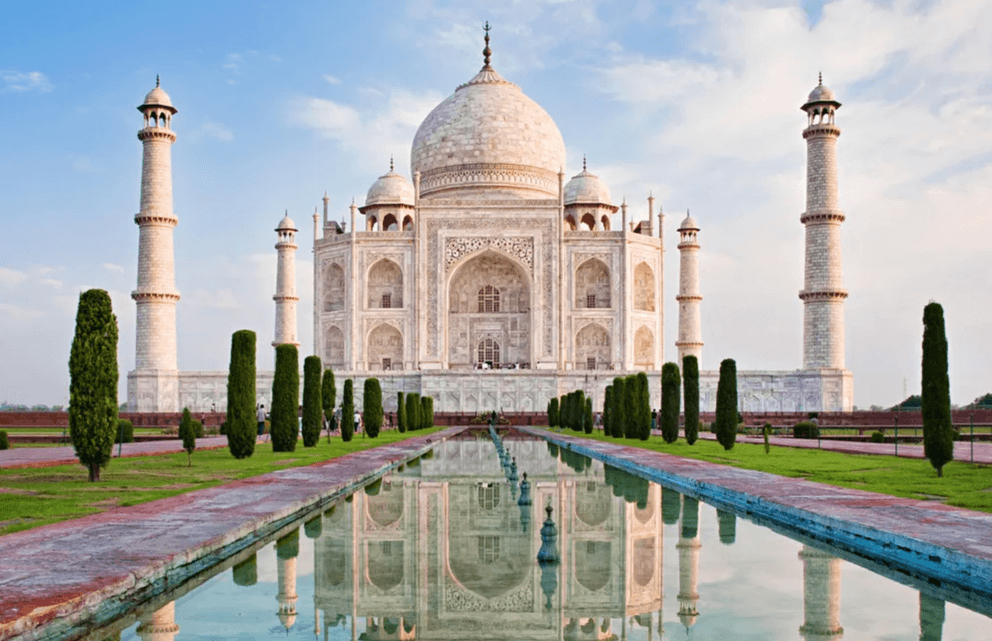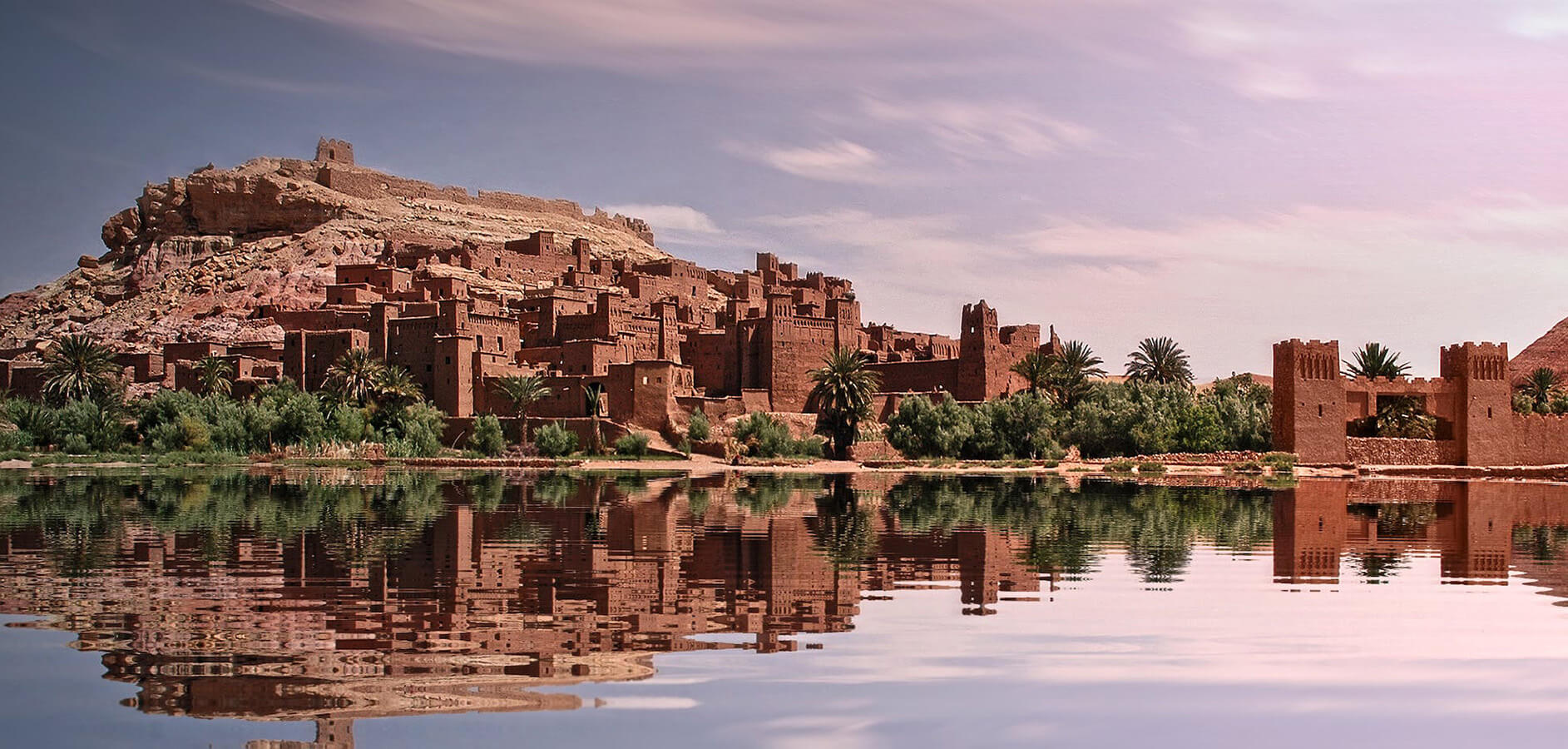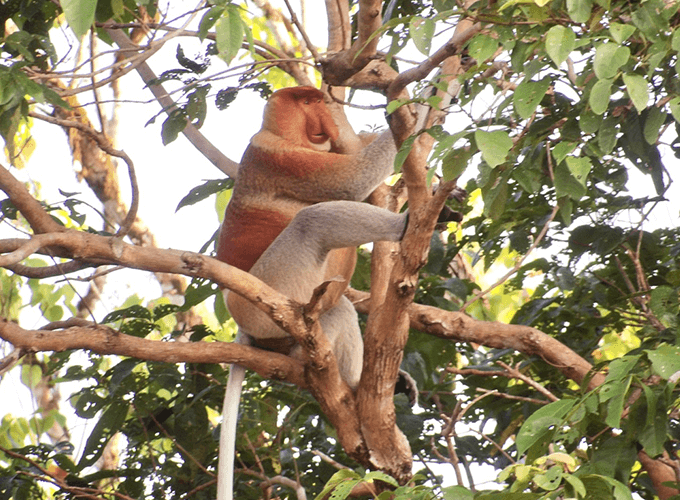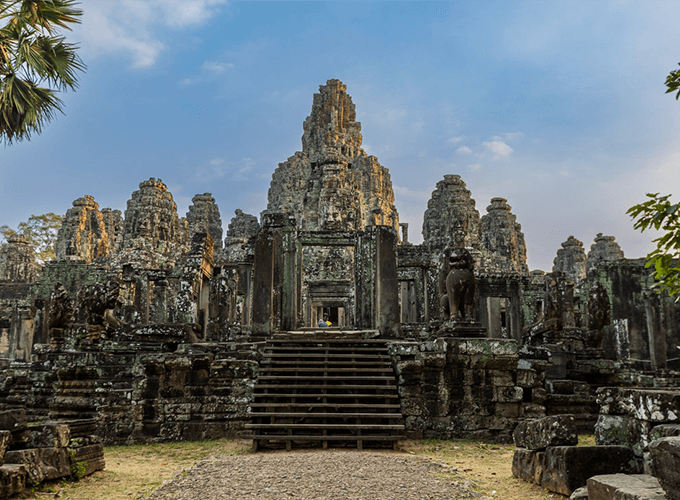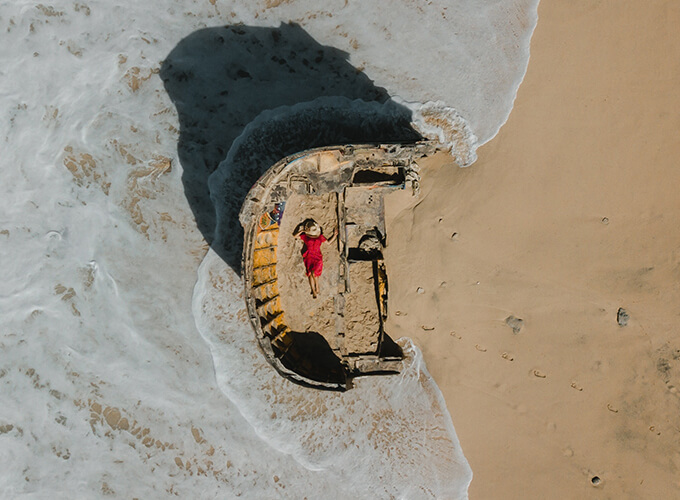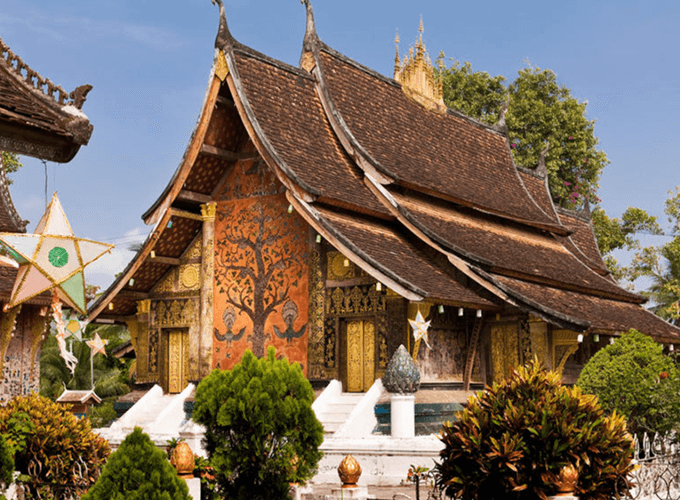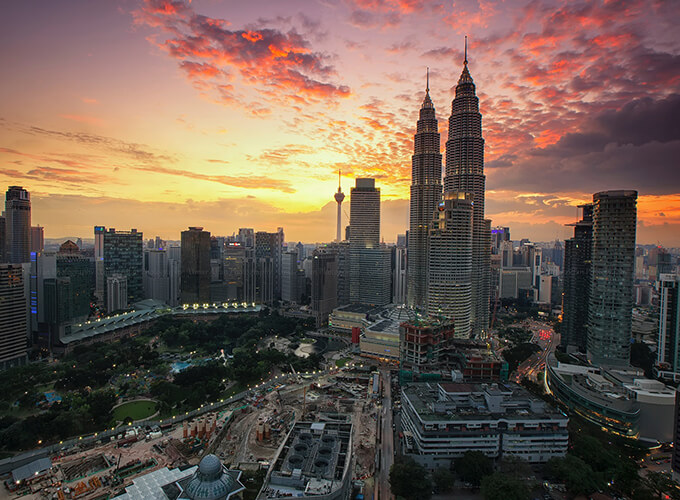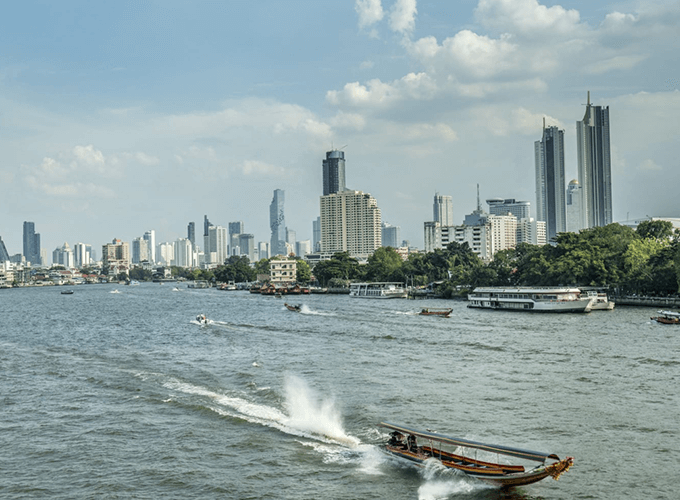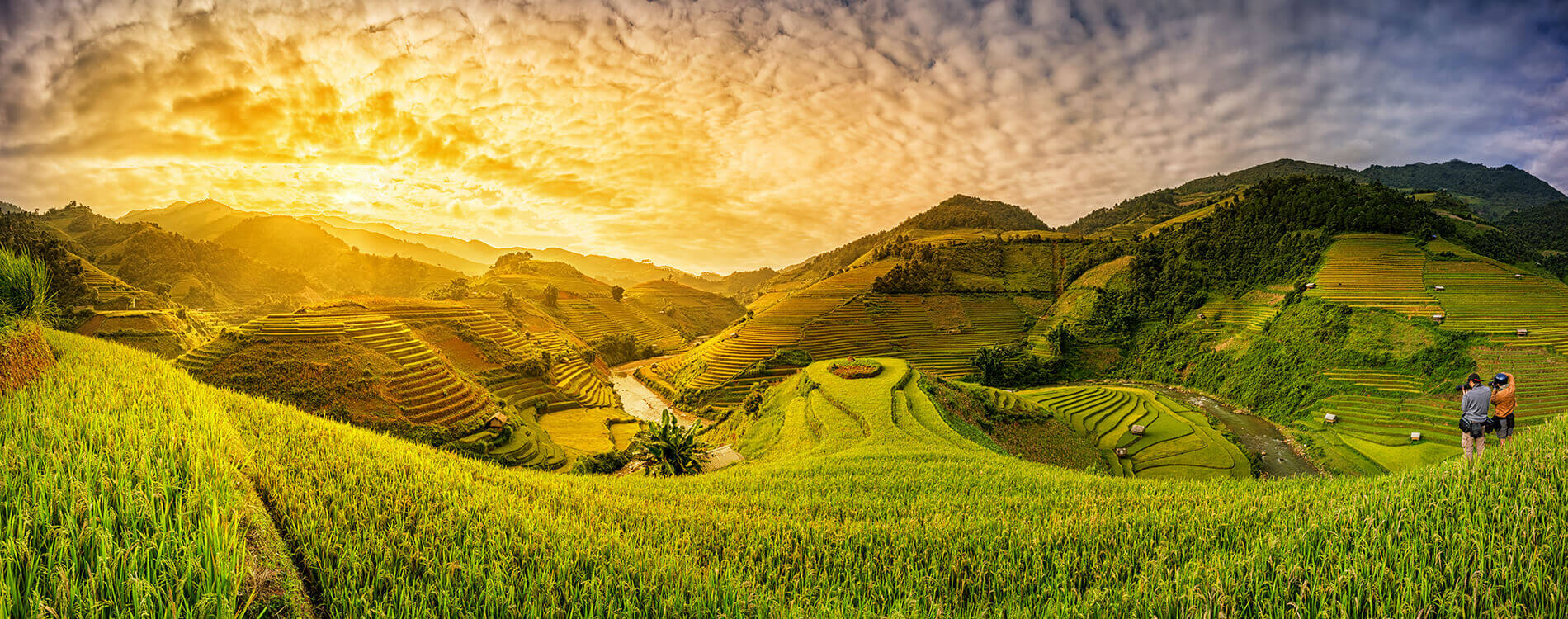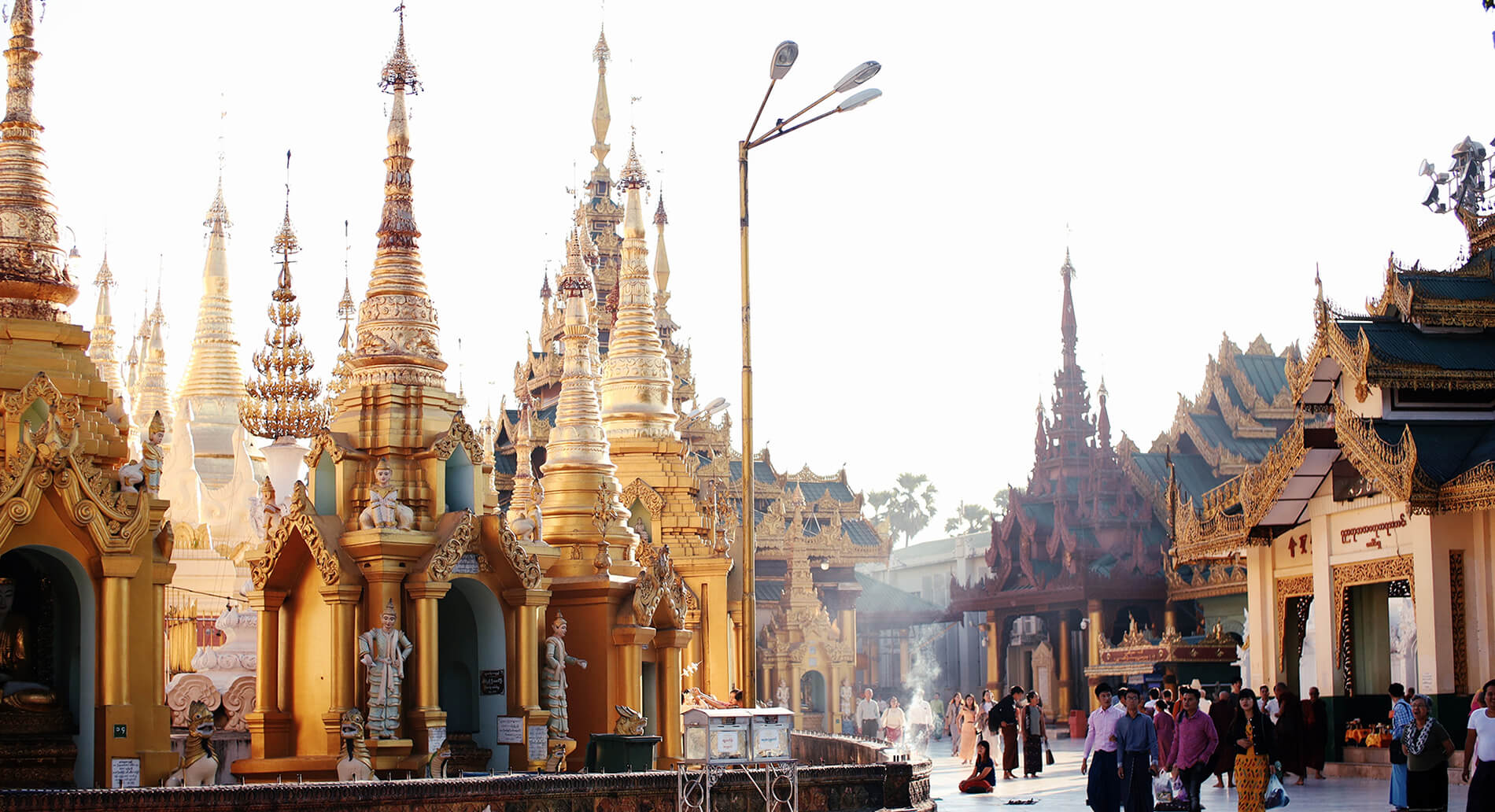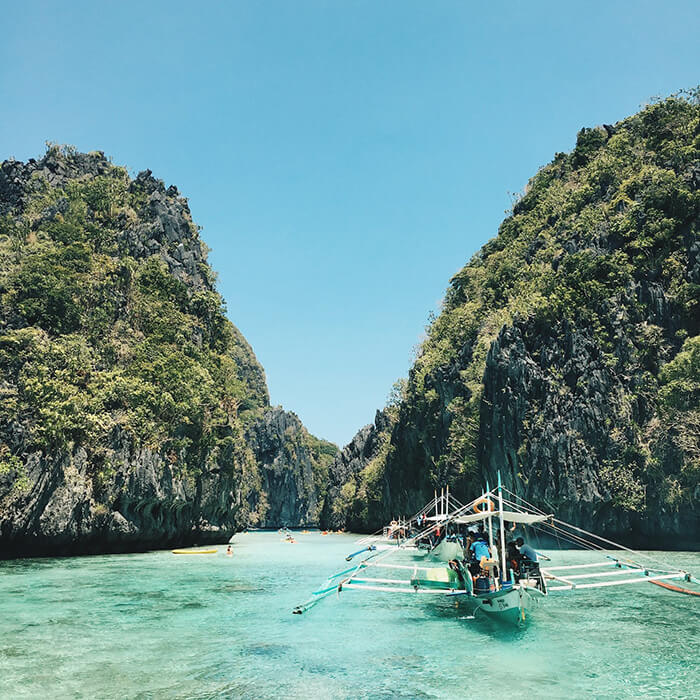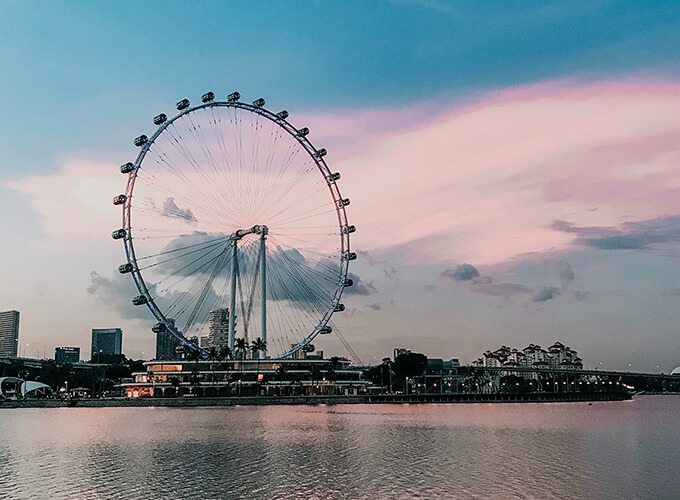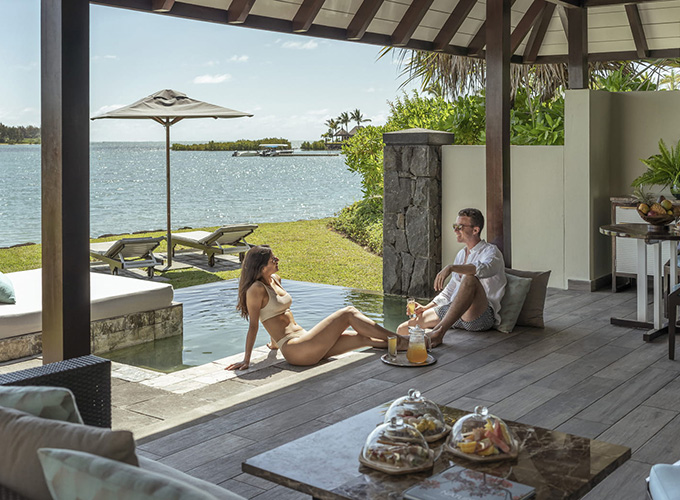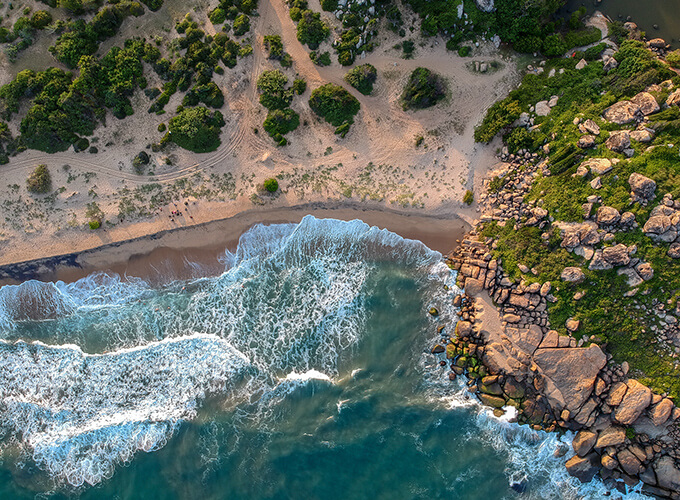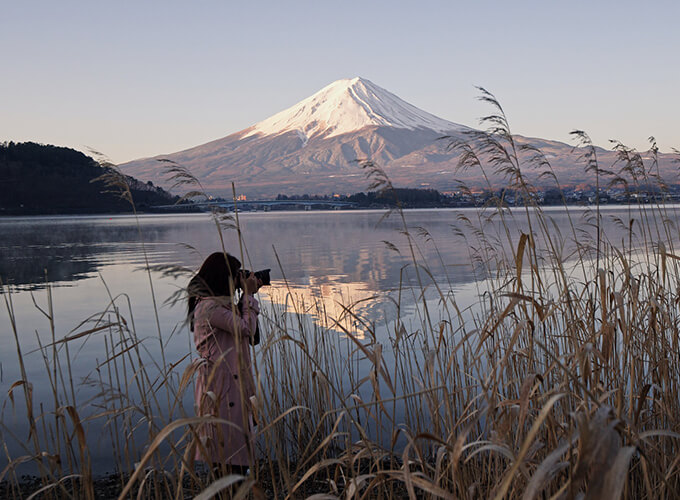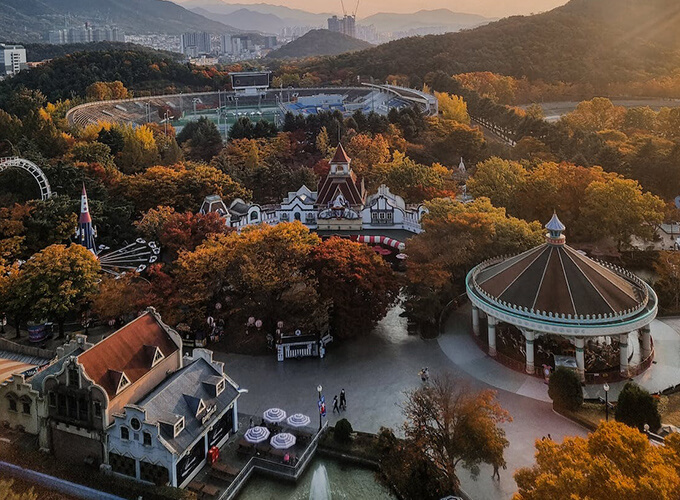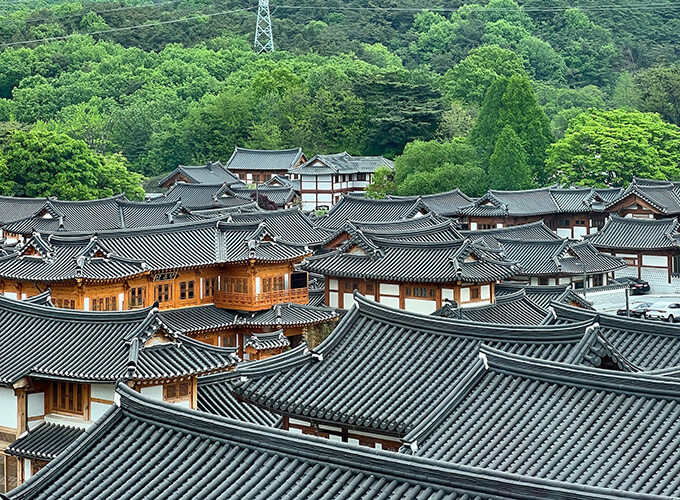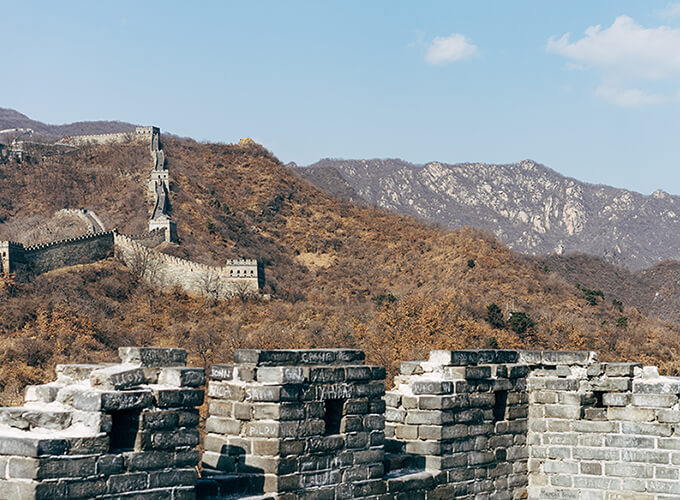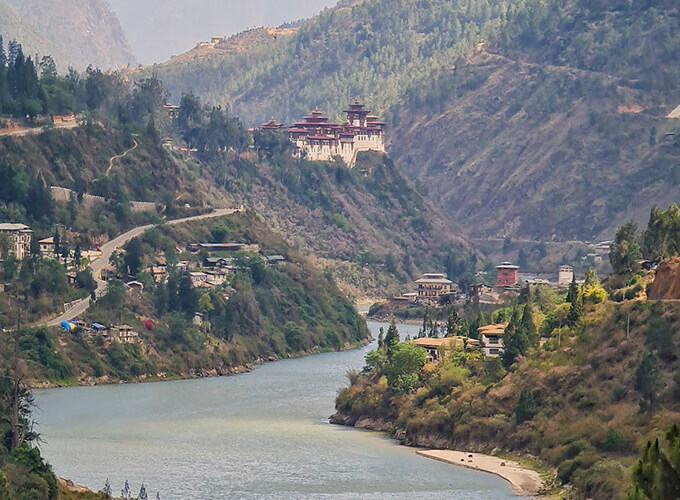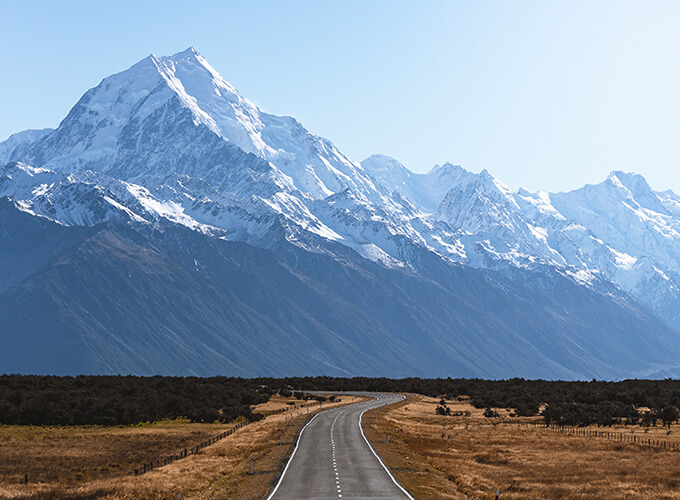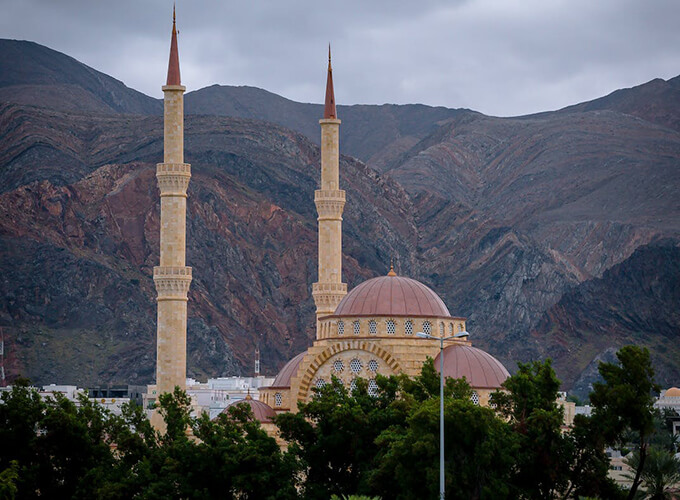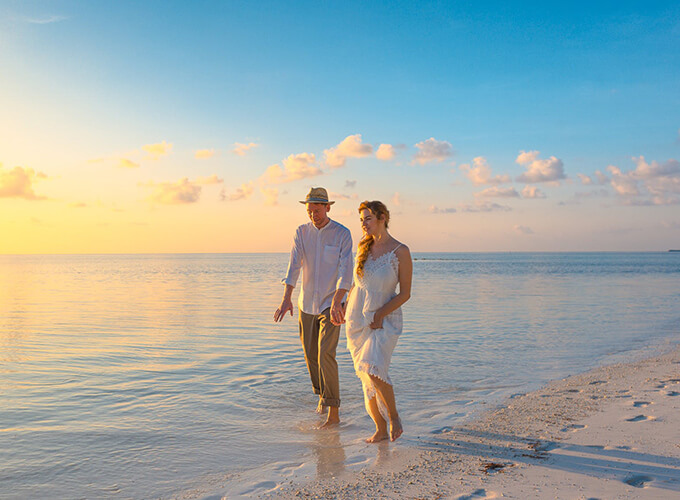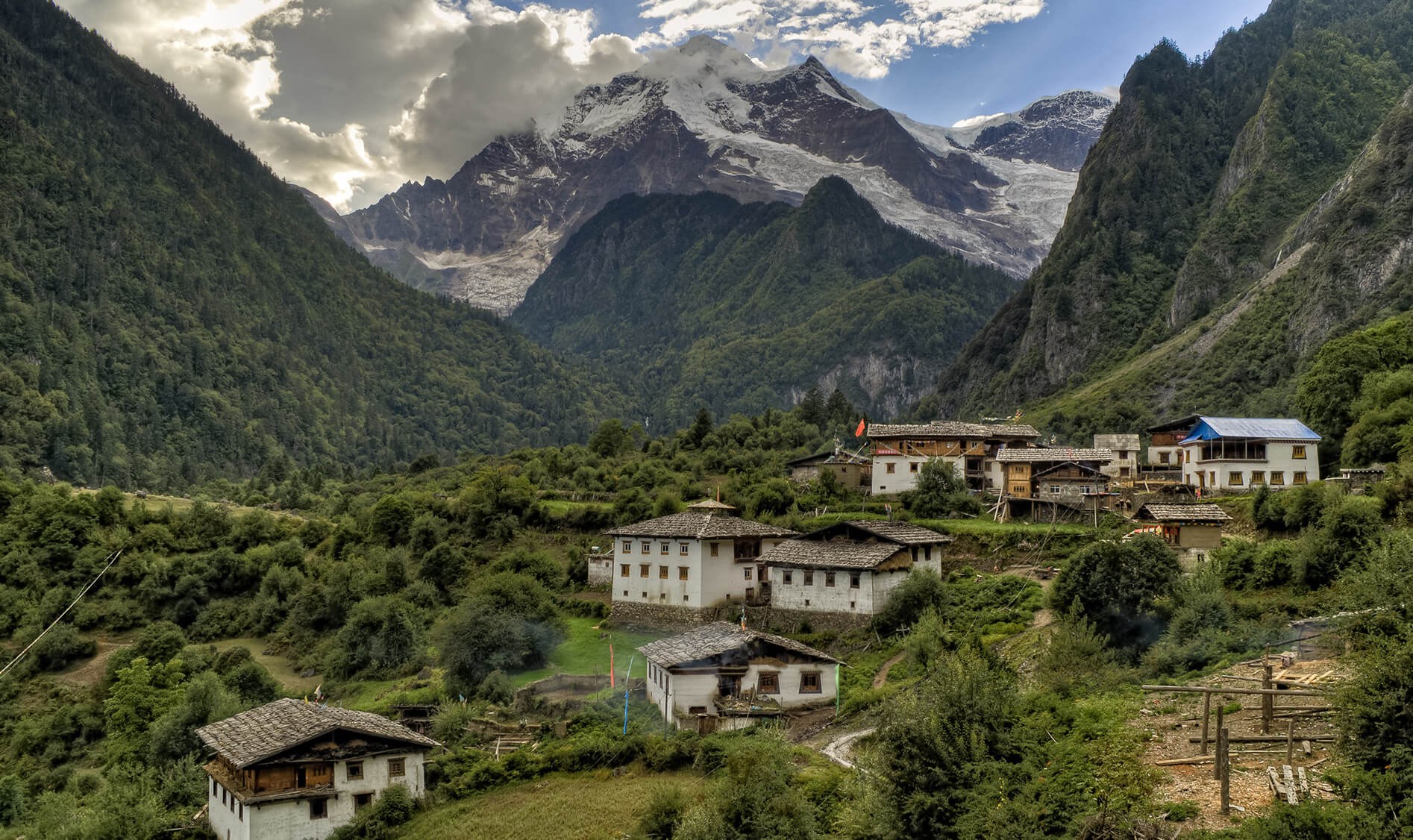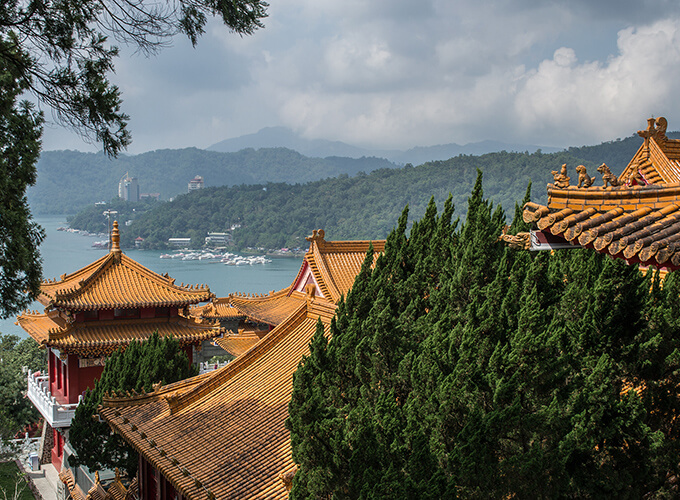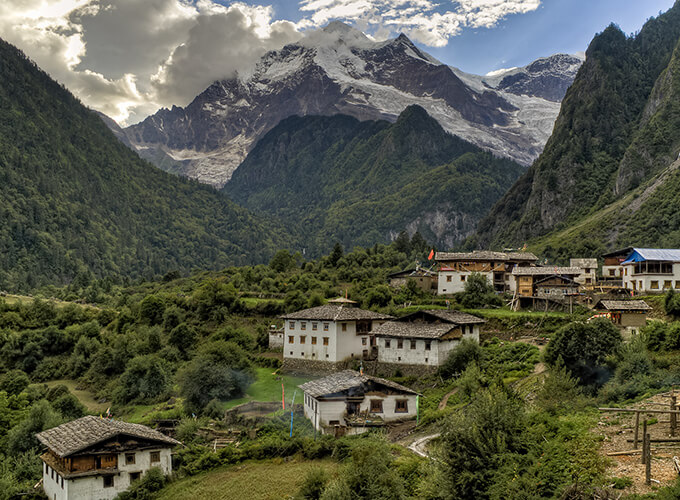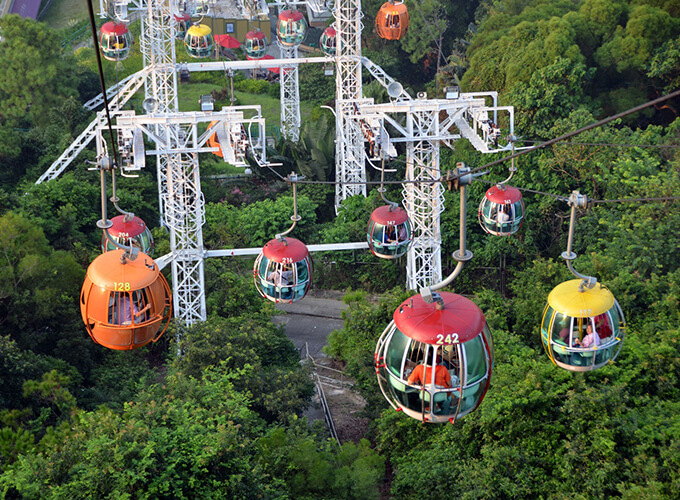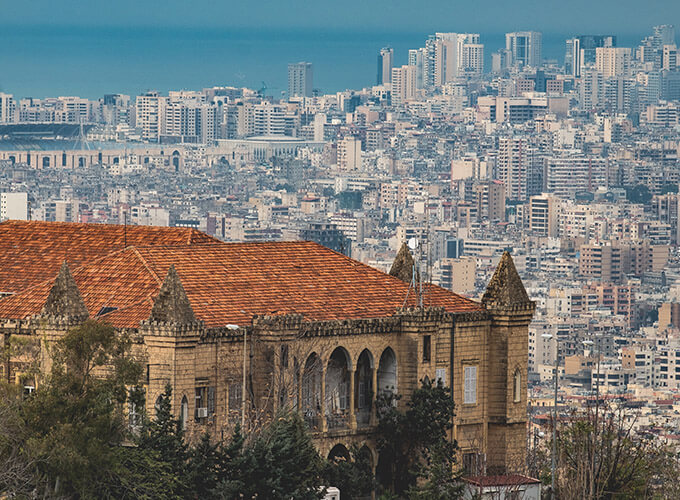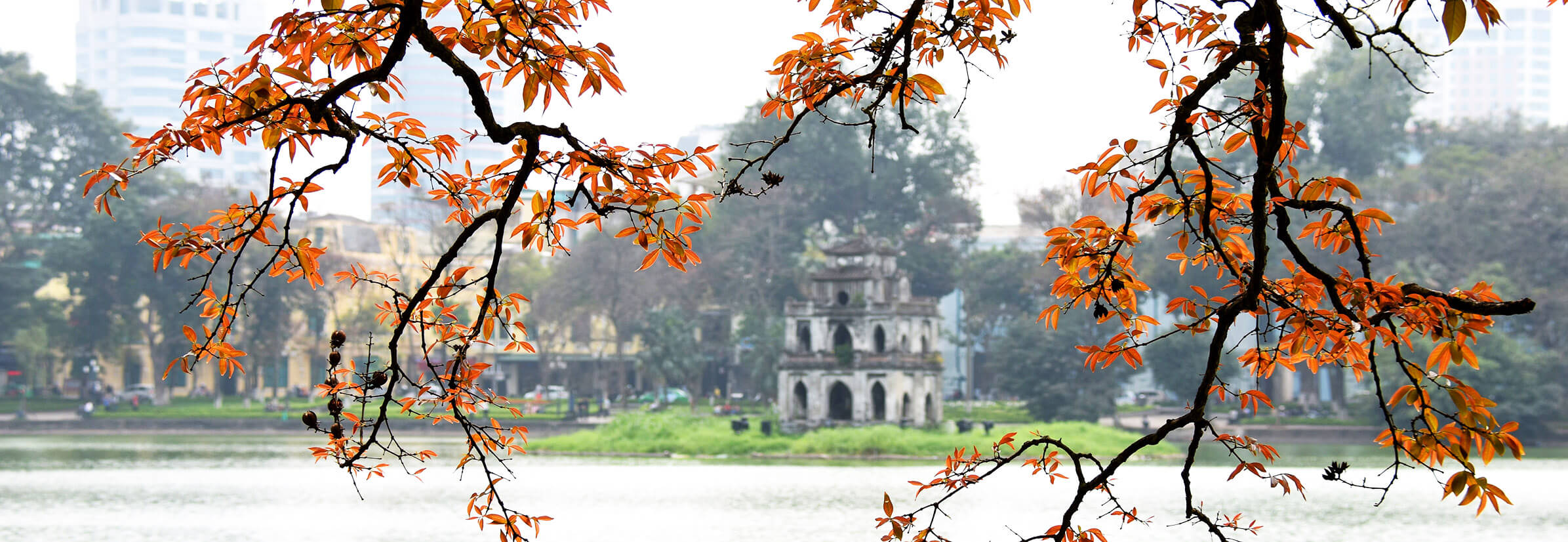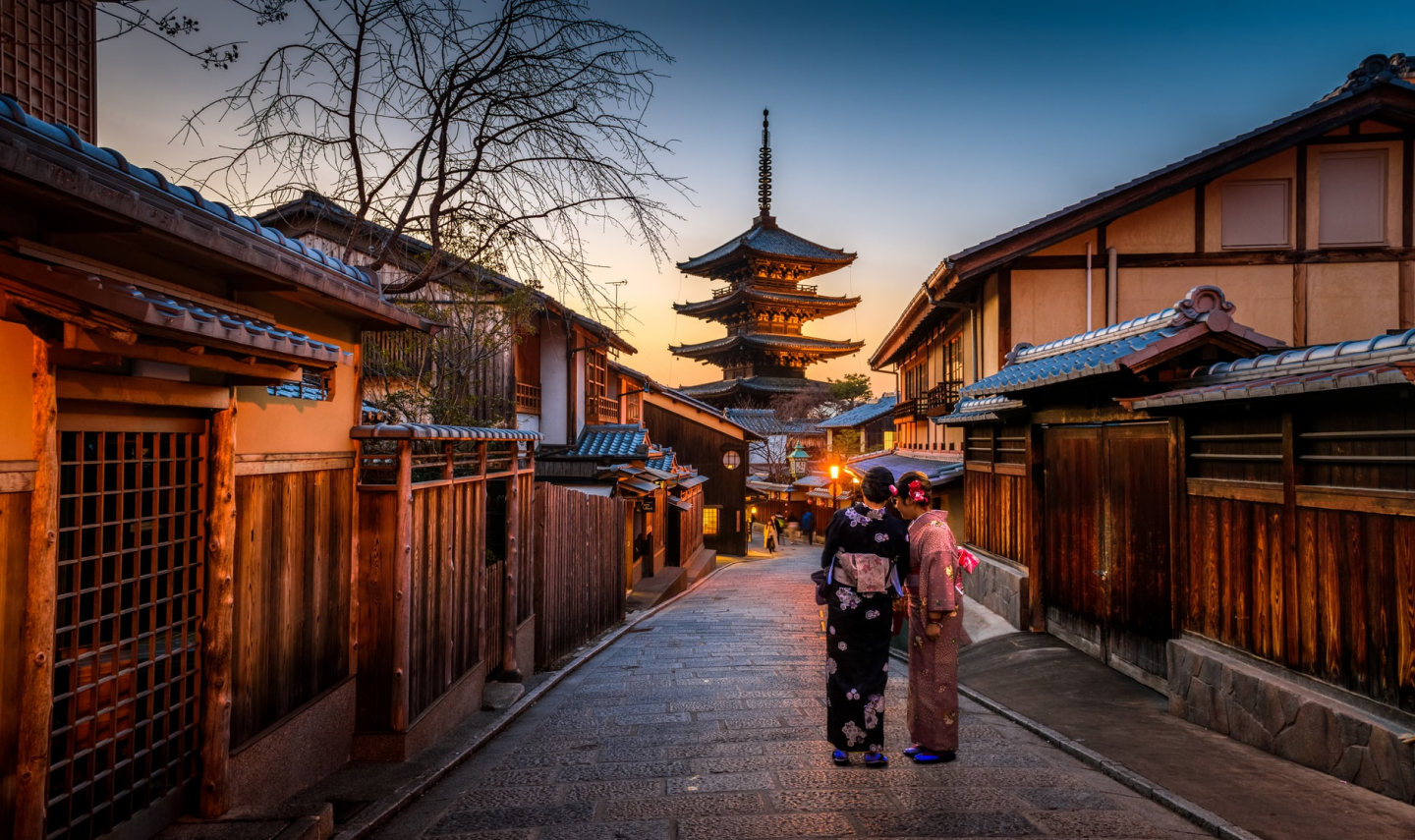Because of its position between mainland Asia and the Pacific, Japan experiences four different seasons and a wide range of climates. As someone who has spent time in Japan, I can attest that the Japanese are justifiably proud of their seasons. From a picnic among the cherry blossoms in the spring to a wintertime dip in an onsen amidst the snow, they relish each changing of the seasons.
Summers are warm and bright, while winters are cold and snowy; each season offers unique opportunities. When to visit Japan might be challenging, but I've listed the best and most underrated activities for each season below. Check out our Japan travel guide for additional information on scheduling your trip to coincide with Japan's seasonal transitions.
Spring in Japan
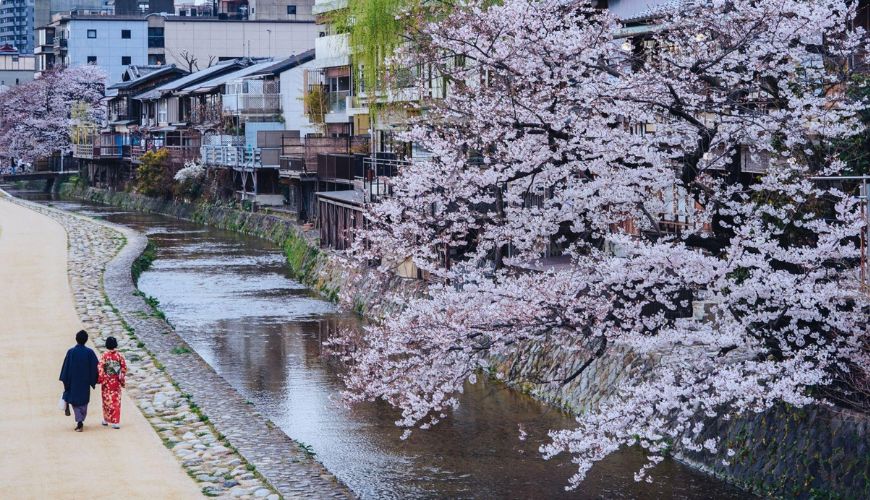 Springtime in Kyoto, Japan's Philosopher's Walk.
Springtime in Kyoto, Japan's Philosopher's Walk.
Ancient Japanese poetry celebrates the appearance of cherry blossoms because of their significance to Japanese culture over many centuries. Under the canopy of the flowering trees, the nobility, poets, artists, and courtesans would celebrate the arrival of spring.
Picnicking beneath the cherry blossoms, or hanami ('hana' meaning flower and'mi' to see), has become a national tradition in Japan.
The beauty of these flowers lies in their short lifespan—anywhere from two weeks to two days (a little rain may wash away the delicate petals). In the south, Okinawa sees the first blossoms in early February, and by the end of May, the northern island of Hokkaido has also bloomed.
The best time to see Tokyo, Kyoto, and the rest of the main island in bloom varies yearly, but it's usually around the middle of April. Hundreds of cherry trees line the 2 kilometers (1.2 miles) long Philosopher's Path, a stone walkway in Kyoto's Higashiyama neighborhood. Nearly 1,200 trees bloom with clouds of pink in Tokyo's Ueno Park, providing fluffy parasols for the crowds of people having picnics in the shade.
Hotel accommodations in Japan may be booked up to a year in advance during the cherry blossom season. If you want to get away from the crowd, you may get on a plane and go two hours north of Tokyo to the charming castle town of Hirosaki. Around Hirosaki Castle, which is around three stories tall, 2,600 cherry trees are said to bloom in April.
Kakunodate, a Samurai hamlet in the Semboku area, is renowned for its beautiful juxtaposition of fluffy pink petals and stern black walls. It is another well-known location less likely to have a tourist influx.
Other spring experiences in Japan
Spring has more to offer than just cherry blossoms. The plum blossom, whose tiny, bright-pink petals are sometimes mistaken for cherries, opens its petals between the middle of February and the middle of March. Fields of tulips and phlox in every rainbow color may be seen in Hokkaido.
In late April and early May, you may visit the Kameido Tenjin Shrine in east Tokyo and stroll amid tunnels of blooming mauve wisteria.
Many Japan’s gardens shed their winter coverings in the spring, allowing the bright green foliage and blossoms to emerge.
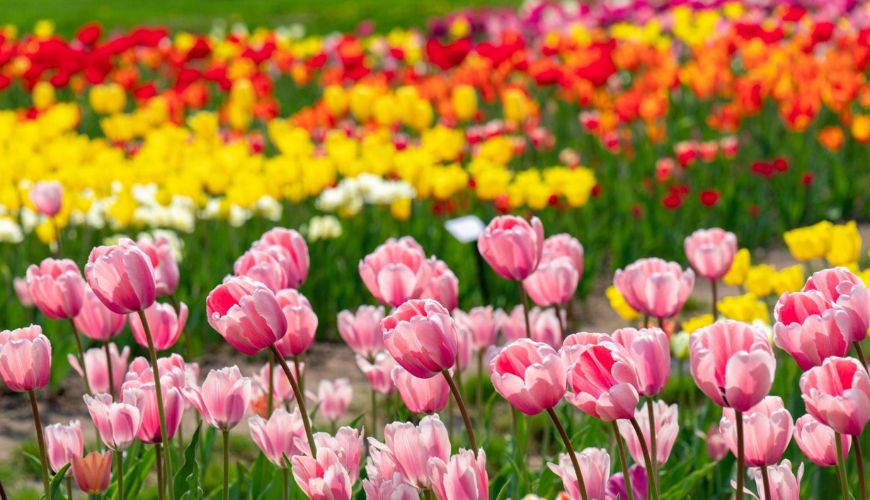 Hokkaido tulip gardens
Hokkaido tulip gardens
Seasonal Spring Food in Japan
From taiyaki (stuffed fish-shaped cakes) to mochi (sweet rice balls) to beer created from the petals, the variety of cherry blossom-themed cuisine is almost ludicrous. In the spring, people may be seen picnicking in parks while eating bento boxes, often including seasonal ingredients like bamboo shoots and lotus roots. These elegantly packed lunches may be purchased at your neighborhood convenience shop, often including sushi, prawn tempura, and grilled salmon.
Rice cooked with clam fluids and garnished with fresh mitsuba (Japanese parsley) is a seasonal staple at this time of year. The steamed clams in sake are a heavy meal.
Spring festivals and events
Twenty minutes by rail from Kyoto, in the economic hub of Osaka, begins one of Japan's six yearly Grand Sumo Tournaments. I like watching sumo because the rules are straightforward and the sport is simple to understand. Each fight ends when the loser is forced out of the ring or is the first to touch the floor with any part of his body other than his bare foot. Massive stomping happens before each round as the wrestlers try to out-psych each other.
One of the world's major animation conventions, AnimeJapan, occurs in late March. Hundreds of stores, seminars, and workshops relating to anime gather at Tokyo's Big Sight convention center for this annual event. The cosplay section, where attendees display their (often highly intricate) handmade costumes, is a highlight.
Seasonal tips
The Japanese are notoriously lousy at planning vacations, so the government instituted a mandatory weeklong holiday called Golden Week at the end of April. Too many people at the sights and hotels become booked early, so I wouldn't recommend traveling then.
Summer in Japan
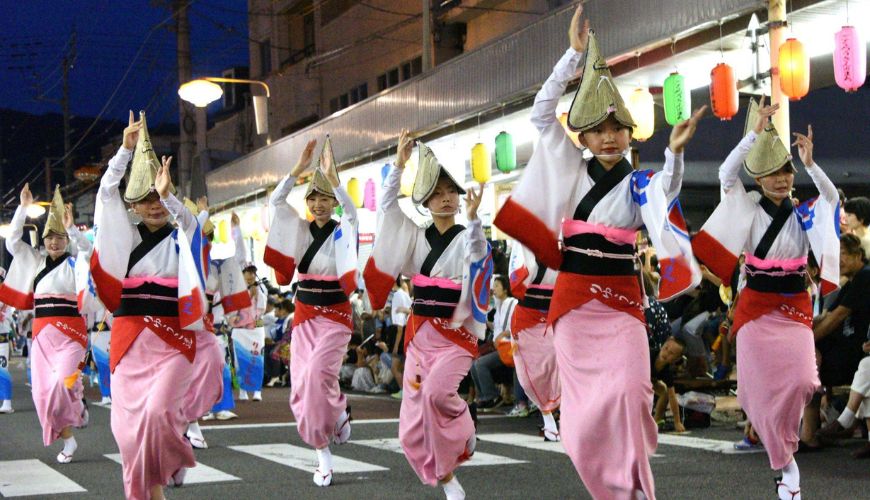 Awa Odori, Tokushima
Awa Odori, Tokushima
Even if summer in Japan doesn't offer its spectacular counterpoint to spring's bloom, it does mark the beginning of the festival season, when fireworks light up the sky almost every night. There are also fewer tourists, which means cheaper hotel rates.
Beginning in June, the air gets stickier, and temperatures rise progressively during July and August. Almost every building has air conditioning, so you can easily cool down. Still, the typical temperature is approximately 32 °C (90 °F), so you should take it easy the first few days until you adjust to the heat.
Other summer experiences in Japan
The Shiretoko Peninsula in Hokkaido is seldom visited, although it is one of the best sites to see Japan's untamed, undeveloped landscapes and fauna. Hiking through large swaths of well-conserved wilderness, cruising to observe wild bears fishing for salmon on the beach, and searching for beaked whales in the nutrient-rich seas are possible ways to spend time here. The weather is more pleasant for outdoor activities since it is colder than farther south.
If you're a birdwatcher, make the trip up here solely to see a red-crowned crane, a rapidly declining species (though you'll have to suffer the winter to see the outrageously spectacular mating rituals).
Hokkaido is also a prime location for studying the Ainu, the native people of Japan's northern islands. The Upopoy National Ainu Museum and Park is an outdoor Shiraoi museum where you can see traditional Ainu dance and music performances.
Seasonal Summer Food in Japan
Refreshing flavors are the focus of summertime fare. Hiyashi Chuka (cold ramen) is the staple food of Japan. It consists of cold noodles and seasonal veggies mixed in a vinegary sauce. Whether or not a hiyashi chuka is delicious depends on how many different flavors and textures it incorporates, from the cool crunch of cucumber to the sweetness of peach.
Shaved ice drenched in syrup is known as kakigori in Japan and is a popular summertime dessert. You may keep it plain and basic by purchasing a cup from one of the vendors hawking brightly colored fruit syrups in neon containers. You may get an artisanal version with toppings like soybean paste, matcha tea, and pumpkin cream at a specialty store in a major city.
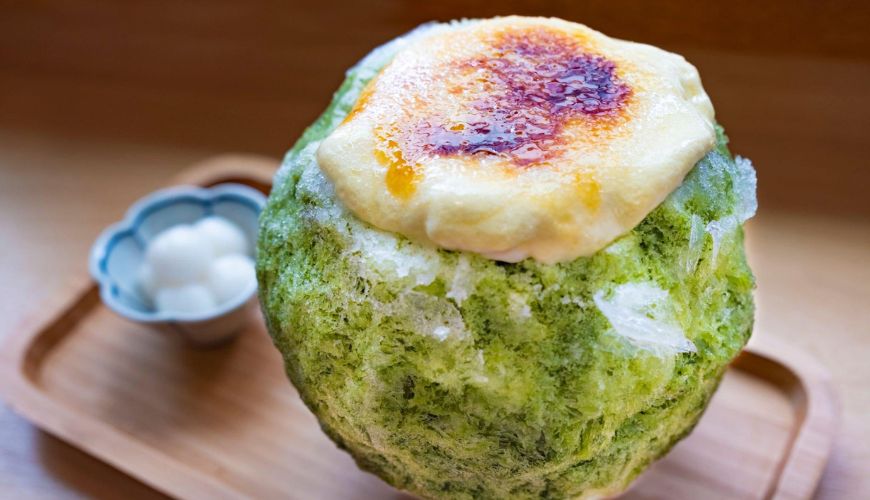 Matcha Kakigori, Tokyo, Japan
Matcha Kakigori, Tokyo, Japan
Summer festivals and events
Japan seldom has a summer evening without fireworks; summer is a festival and celebration season. And I don't mean just a few loud explosions here and there. I have yet to see better fireworks than those created in Japan (many of the exhibits during the Olympics were constructed there).
During the first week of August, Buddhists worldwide commemorate their ancestors' life with fireworks and dance. This festival is known as Obon. Tokushima on Shikoku Island hosts the Awa Odori dance festival, which draws visitors from around Japan.
About 450 years ago, Tokushima's daimy (feudal lord) gave out sake as a prize to the locals after a successful rice harvest. The streets erupted in dancing, a tradition that has continued annually since.
While residing in a neighboring town, I danced in the event. It's grown into a big, multi-day street festival. Women wore traditional hats called amigasa, which looked like two fans glued together, and geta (uncomfortable-looking wooden shoes), and we danced in a parade around the city to synchronized steps.
In the evenings, everyone puts on their light cotton yukata kimonos and heads down to the riverfront to watch the fireworks while snacking on kakigori.
Seasonal tips
Climbing Mount Fuji, only possible during July and August, may be highly romanticized in your guidebook. There are better ways to spend your time. You can only wait in line to reach the peak when the mountain fills up. The best view is from a distance, from the coast of one of the five lakes in the area.
June is when the rainy season in Japan usually begins to strike the mainland. Temperatures average approximately 25°C (77°F), and humidity levels exceed 80%.
Autumn in Japan
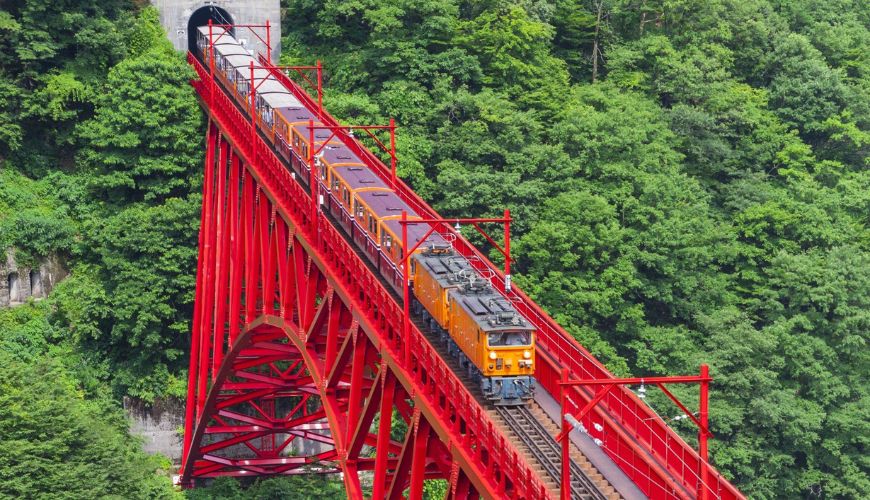 Kurobe Gorge
Kurobe Gorge
The native momiji maple tree's leaves turn a brilliant crimson and orange in the fall, creating a blanket of color over the countryside (known as koyo) that begins in Hokkaido in late September and spreads to Kyoto and Tokyo by mid-November.
The change from chlorophyll to flower takes about a month, whereas chlorophyll takes about a week. You may ride the rails throughout Japan and see the seasonal transformation of the foliage if you catch a train while it is still summer.
The Nakasendo Highway is a stunning walking track that shows quite a show. The highway runs 533 kilometers (330 miles) between Tokyo and Kyoto, making it one of the five original routes between the two cities. It's difficult to complete since certain areas get quite congested; instead, I recommend concentrating on one of the larger segments. The 20 km (12 mi) stretch between Kiso-Fukushima and Nagakubo is often uncrowded and beautiful throughout the autumn.
The Japanese Alps and other national parks are ablaze with vibrant fall colors. You can go around them on foot, on a bike, or even in a cable car. However, using a train is my most enjoyable way to travel. The cliffs at Kurobe Gorge are covered with trees, making it one of Japan's most treacherous places. The Kurobe Canyon Railway crosses the canyon with breathtaking vistas along its 40 tunnels and 20 bridges.
You won't need to make reservations as far in advance in the fall as you would for cherry blossom season.
Other autumn experiences in Japan
The Shimanami Kaido, a flat, smooth, contemporary bicycle path connecting six islands in the Seto Inland Sea and giving some of the country's greatest ocean vistas, is best experienced in the fall due to the milder weather. The route from Onomichi to Imabari is around 70 kilometers (34 miles) long and is adorned with beautiful suspension bridges and dedicated bike lanes. There are plenty of places to eat and have your tires inflated along the way.
Avid cyclists can whizz along at speed and finish the entire road in just half a day. Still, I suggest lingering instead, with stops to admire the scenery, buy fruit at farmstands, explore various temples and shrines, and otherwise dawdle.
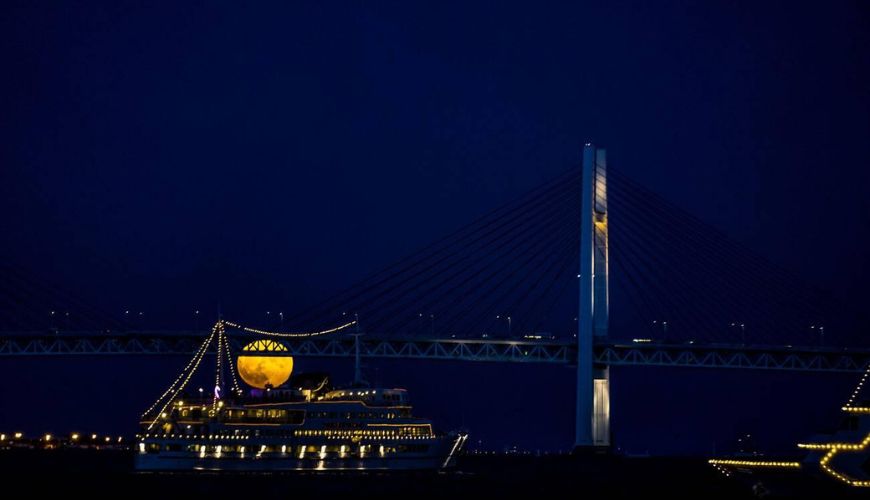 The Mid-Autumn Moon above the Yokohama Bay Bridge
The Mid-Autumn Moon above the Yokohama Bay Bridge
Seasonal autumnal food in Japan
The end of summer signals the end of light meals. Therefore, the Japanese proverb shokuyoku no aki dubs autumn "the season of hearty appetites." Sanma (so associated with fall that it means "autumn fish") is at its peak now since fish are bulking up for the winter. Sanma is often coated in salt and smoked over a grill since it is a fatty, delicious fish.
Daikon, like many other vegetables, is now in season. You may find this long, white radish relative in salads or pickled and used as a condiment.
Fresh chestnuts, or kuri, are one of the most iconic fall foods. Ancient Japanese people enjoyed eating them roasted or blended into sweet fillings. Chestnut compote with candied chestnuts adds sweetness to savory foods.
Fall festivals and events
The Japanese celebrate the harvest moon with a festival dedicated to gazing at the moon called Tsukimi. On this night, the brightest moon of the year, people gather in parks, temples, tea houses, and even along the river to marvel at it. Tsukimi dango, little white rice flour dumplings, are often used as offerings (and consumed later).
Seasonal tips
September's lack of crimson foliage makes it one of the most affordable months to visit Japan. Dryness prevails, and temperatures average approximately 25 degrees Celsius (72 degrees Fahrenheit).
Winter in Japan
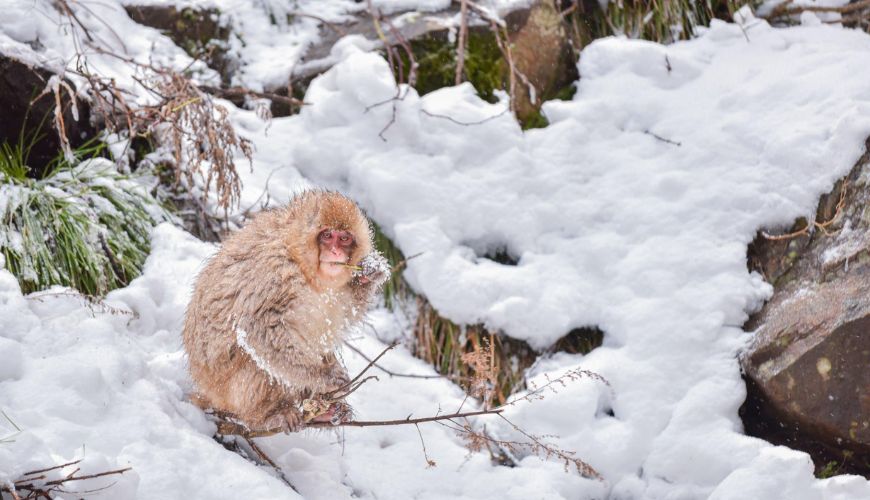 Japanese macaques, Yudanaka
Japanese macaques, Yudanaka
Japan receives chilly winds and heavy snowfall from Hiroshima fronts, while southern islands like Kyoto remain pleasant. This time of year also has the lowest rainfall and the warmest temperatures in Tokyo, Kyoto, and Kanazawa.
The ideal way to enjoy the winter season is from inside a steaming onsen (hot spring bath). At Zaborin Ryokan, you may spend the winter in complete seclusion amid western Hokkaido's spruce and fir forests. Relax in the mineral-rich waters of an outdoor onsen (rotenburo) amid a forest of snow-covered trees.
In addition to people, other animals also enjoy a good soak in the tub. Yudanaka, a hot-springs resort northwest of Tokyo, is a popular destination for Japanese macaques (also known as snow monkeys). While the monkeys relax (with adorable little smiles on their cheeks), you can warm yourself in one of many human-friendly onsens.
Other winter experiences in Japan
Even though annual snowfall totals fluctuate, Aomori is consistently one of the leading candidates for the world's snowiest city. It is also the location of Aomoriya, a family-friendly theme park that hosts a Michinoku Festival every night of the year.
In addition to watching the snow fall softly, other pleasures include resting your feet in hot springs and gazing at lanterns floating on a pond. Train rides through the wintry terrain are also an option, especially if you're interested in sampling the local specialty of sake fermented in the shell of a spiny crab.
Seasonal Winter Food in Japan
Fishermen in northern Japan have been busy due to the strong demand for snow crabs. Due to overfishing, this once-thriving food supply has almost disappeared. However, now that sustainable fishing techniques have been implemented, crabs are again on the table.
The freshest crabs in the nation may be found in the northern coastal city of Kanazawa, although you can taste them throughout Japan. Before dining at one of the surrounding restaurants, you may see them being prepared for sale at Omicho Market. I commonly order shabu shabu, which consists of raw crab served in a boiling broth.
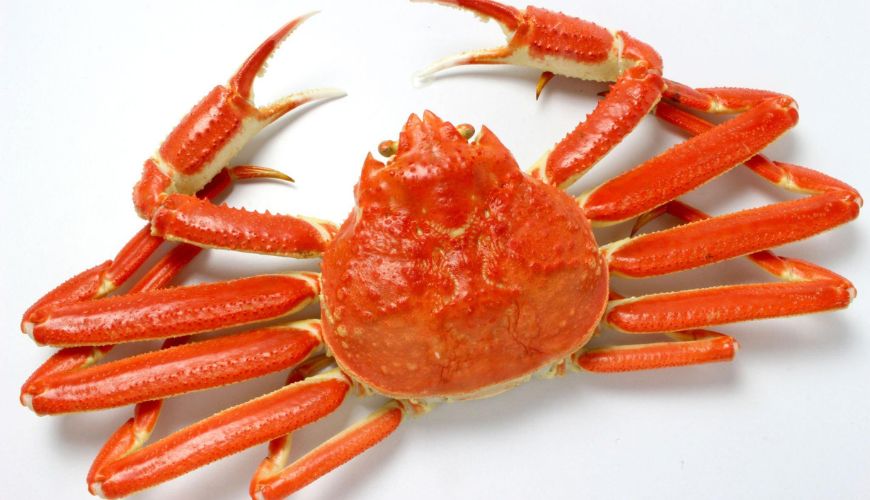 Snow crab
Snow crab
Winter festivals and events
Even though Christmas Day is a regular work day in Japan, the Japanese nevertheless enjoy celebrating the holiday. Everywhere you go, you may find a Christmas market in the German tradition, and even the brightest cities go all out for the holidays. More than 200,000 individually painted lights decorate the streets of Kobe.
During New Year's Eve celebrations, families typically eat mochi, rice cakes, and toshikoshi soba, a dish with buckwheat noodles (the long strand noodles stand for long life). Many cultures celebrate the New Year by going to a temple and hearing the bell ring 108 times to atone for the previous year's sins. After the ceremony, at certain temples, you may ring the bell to bring good luck in the next year.
Seasonal tips
The Sapporo Snow Festival, with ice sculptures the size of multi-story skyscrapers, is a must-see if you're in Hokkaido in February.
Start planning your trip to Japan
Start thinking about your experience. These itineraries are simply suggestions for how you could enjoy some of the same experiences as our specialists. They’re just for inspiration, because your trip will be created around your particular tastes.




